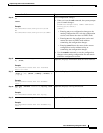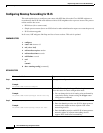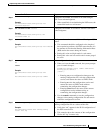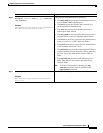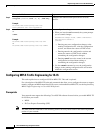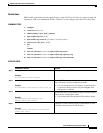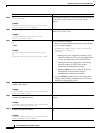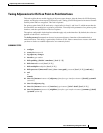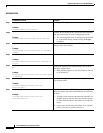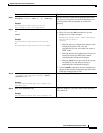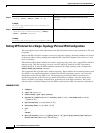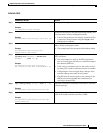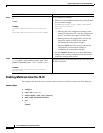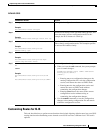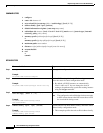
Implementing IS-IS on Cisco IOS XR Software
How to Implement IS-IS on Cisco IOS XR Software
RC-113
Cisco IOS XR Routing Configuration Guide
Tuning Adjacencies for IS-IS on Point-to-Point Interfaces
This task explains how to enable logging of adjacency state changes, alter the timers for IS-IS adjacency
packets, and display various aspects of adjacency state. Tuning your IS-IS adjacencies increases network
stability when links are congested. This task is optional.
For point-to-point links, IS-IS sends only a single hello for Level 1 and Level 2, which means that the
level modifiers are meaningless on point-to-point links. To modify hello parameters for a point-to-point
interface, omit the specification of the level options.
The options configurable in the interface submode apply only to that interface. By default, the values are
applied to both Level 1 and Level 2.
The hello-password command can be used to prevent adjacency formation with unauthorized or
undesired routers. This ability is particularly useful on a LAN, where connections to routers with which
you have no desire to establish adjacencies are commonly found.
SUMMARY STEPS
1. configure
2. router isis instance-id
3. log adjacency changes
4. interface type number
5. hello-padding {disable | sometimes} [level {1 | 2}]
6. hello-interval seconds [level {1 | 2}]
7. hello-multiplier multiplier [level {1 | 2}]
8. hello-password {hmac-md5 | text} {clear | encrypted} password [level {1 | 2}] [send-only]
9. end
or
commit
10. show isis [instance instance-id] adjacency [interface-type interface-instance] [detail] [systemid
system-id]
11. show isis adjacency-log
12. show isis [instance instance-id] interface [type instance] [brief | detail] [level {1 | 2}]
13. show isis [instance instance-id] neighbors [interface-type interface-instance] [summary] [detail]
[systemid system-id]



